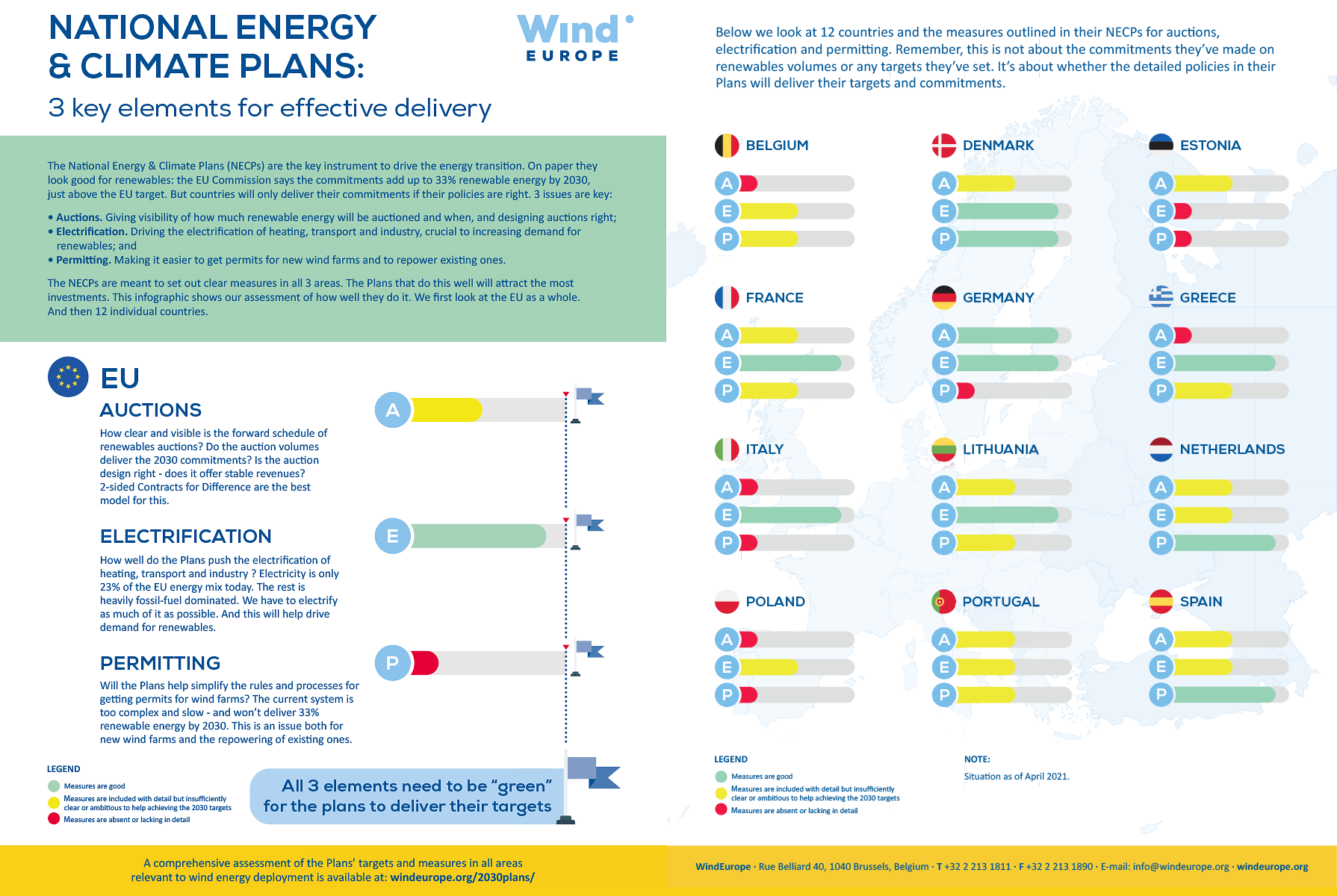The 2030 National Energy and Climate Plans (NECPs) are the framework for Member States to outline their climate and energy goals, policies and measures from 2021 to 2030.
The development of these Plans is a legal requirement under the Governance Regulation adopted in December 2018. Member States were due to submit their final 2030 NECPs at the end of 2019. 26 Plans have been submitted with the remaining one, Ireland, expected shortly.
The NECPs must give investors and the European Commission a coherent picture of how the European Union is going to fulfil its climate & energy objectives to 2030, in particular the collective 32% renewable energy target. The NECPs are thus the key instrument to provide visibility to the renewable energy sector over the next decade. That will help attract investments and generate jobs and growth, including in economically disadvantaged areas.
The Plans will support the export of European know-how, services and goods. All of this is fundamental to a rapid and future-proof post-COVID-19 economic recovery.
WindEurope has assessed these Plans, with particular attention to six areas that are key to wind energy deployment: auction schedules, power grid and markets, permitting and end-of-life, electrification, corporate renewable Power Purchase Agreements (PPAs), and Research & Innovation. You will find in the table below an overview of the targets and measures submitted by Member States in their final Plans.
The Infographic above shows our assessment of the policy measures countries laid out in these Plans on visibility on auction schedule, electrification and permitting - three crucial dimensions. Without visibility on the auction schedule and volumes of installations, Member States will struggle to unlock investments. Permitting is the biggest bottleneck stifling wind energy installations in many countries in Europe. Finally, without direct renewable-based electrification of the final energy uses there will be no decarbonisation.
With the Climate Law proposal presented by the European Commission in March 2020, the EU aims at becoming climate-neutral by 2050. An upwards revision of the EU 2030 climate and energy targets is expected this autumn. This only reinforces the importance of the NECPs.
The next revision of the NECPs is currently scheduled for 2023. It is crucial that the measures contained in the Plans are coherent with the objective of climate-neutrality and support the expansion of wind and other renewable energy sources in Europe. We urge the European Commission to consider this in the assessments that will be presented in September and October to the National Governments.
Overview of the targets and measures in the final 2030 National Energy and Climate Plans
Disclaimer: The presented information is subject to modifications. WindEurope is still processing the English versions of the draft Plans which have been made available only recently.


